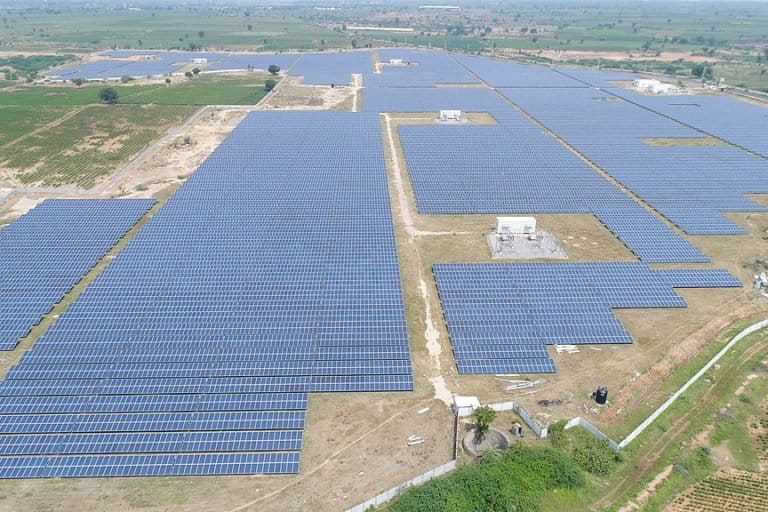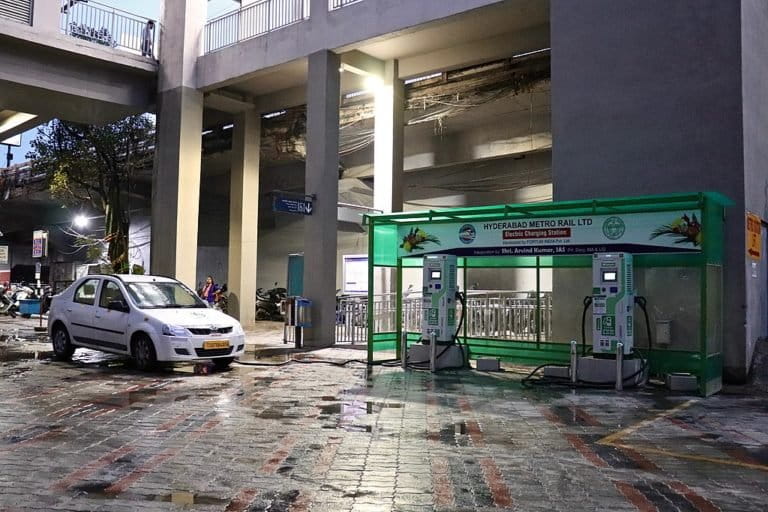- Every year, India requires at least USD 170 billion to finance its actions to tackle climate change but right now the total annual green investments has only been about USD 19 billion (on average).
- The report by think-tank Climate Policy Initiative said that “green sectors” such as renewable energy, energy efficiency, and low-carbon transport, are helping drive the economic growth in India.
- It highlighted that now there is a ‘paradoxical situation” as the record low solar power tariffs that drove investments in the sector in 2016 and 2017 now pose a threat to its growth. It said even wind power, which spearheaded India’s renewable energy growth until 2015, has begun to lose its sheen.
- It suggested that India needs an integrated domestic measurement, reporting and verification (MRV) system to streamline green finance attributes, identify financial constraints and enhance transparency.
India is struggling to lift millions out of poverty and is going to be hit harder than almost any other nation from increasing storms, heat waves, and floods, which together put at risk about 4.5 percent of the country’s estimated USD 2.8 trillion annual Gross Domestic Product (GDP). But, a recent report has revealed that against the USD 170 billion per year required investments by India to finance its climate action, the total green finance over the last few years stood at a little over 10 percent, about USD 19 billion on average, across sectors.
However, the good news is that the green investments have outpaced India’s GDP growth (during 2016-17 and 2017-18 period). The study looked at the nature and volume of green financial flows in the country and it noted that the total green finance flows in India for 2016-17 and 2017-18 were USD 17 billion and USD 21 billion respectively. The report didn’t map pollution abatement activities, biodiversity, agriculture, forestry and other land use and adaptation finance.
“The GDP of India grew at an average rate of 7.2 percent between 2016-17 and 2017-18, and the tracked investments suggest an increase of 24 percent. This indicates that green investments have the potential for driving economic growth of the country,” said the report.
According to India’s Intended Nationally Determined Contribution (INDC) estimates, USD 2.5 trillion is needed from 2015 to 2030 (which works out to about USD 170 billion per year) for climate action. Climate actions can be defined as actions taken by the country to tackle climate change and its impacts. It can include steps to reduce greenhouse gas emissions and integrate climate change measures into national policies.
The report ‘Landscape of Green Finance in India’ released in September 2020 by Climate Policy Initiative (CPI), a think tank working on energy, land use and climate change issues, emphasised that “green sectors” such as renewable energy, energy efficiency, and low-carbon transport, are helping to drive economic growth in India. The study was supported by the Shakti Sustainable Energy Foundation.
Need to upscale green finance
It noted that there is a need for transformational upscaling of green finance across all low-carbon sectors as the “current scope and extent of green finance is grossly insufficient to mitigate the effects of climate change in India.”
In a statement, Mahua Acharya, who is Asia Director of CPI, said that the “report shows the significant potential of renewable energy and other green technologies to fuel India’s economy.”
“It is also encouraging to know that the government of India’s support to unlock private investment has helped, but we also see much more needs to be done. In both years, 2016-2017 and 2017-2018, domestic private investors contributed the largest share (63 percent and 51 percent respectively) of about Rs. 139,000 crores (over USD 18 billion) through debt and equity, while public finance sources supported this investment through a variety of instruments. The domestic public green finance expenditure by the government and its agencies totalled Rs. 71,000 (USD nine billion) for the two years,” said Acharya while highlighting the information gap regarding the amount of green finance in the Indian economy.
She stressed that Indian government’s initiatives including the expenditure undertaken by the dedicated public sector undertakings (PSUs) on climate-related mitigation activities more than doubled from 2016-17 to 2017-18 while the budgetary allocations increased by 36 percent.
The report pointed out that while there is increasing data on air pollution, emissions, and green job creation in India, there is little to no comprehensive information available on whether or not the financial sector is keeping pace with India’s green economic development goals, or which sectors are being financed adequately or under-served. “This information would be invaluable for policy and investment leaders working to scale up investments for sustainable and transformational impact,” said the report.
India has a target of 175,000 megawatts (MW) renewable energy by 2022. At present, the total installed capacity of renewable energy across India is 88,793.43 MW.
Read more: Mega renewable energy park in Kutch could have potentially adverse environmental impact
Energy is among India’s fastest-growing sectors
The report noted that while India’s energy sector is one of the fastest-growing in the world and has been attracting substantial investments, meeting the country’s climate goals will require “proportionate, transformative investment increases at sectoral level.”
It stressed that from 2015 to 2018, energy investments in India grew at the fastest rate in the world. For instance, renewable energy spending, for the first time, exceeded the investments in fossil-fuel-based power generation as strong solar PV and onshore wind power more than compensated for the decrease in new coal plant installations. In 2017, the total investment in renewable energy projects in India had surpassed fossil fuels for the first time.

“Strong financial support and timely policy interventions from the Government of India have played a crucial role in accelerating the growth of the country’s renewable energy sector. But given current rates of penetration and the overall health of the sector combined with slowdown created by the COVID-19 pandemic, the government will have to find new and alternative ways to finance the transition and incentivise private sector participation to scale up investments for a sustainable and transformational impact,” said the report.
The pricing paradox
The report observed that while the power generation sector accelerates ahead of other mitigation-related sectors, the total investments still have a lot of catching up to do to achieve India’s clean energy targets. It stressed that a ‘paradoxical situation has now emerged” and “the record low solar power tariffs that drove investments in the sector in 2016 and 2017 now pose a threat to its growth.”
“Wind power, which spearheaded India’s renewable energy growth until 2015, has also begun to lose its sheen, and particularly its share in capacity additions. In recent years, the sector has been plagued by factors like weakening monsoons, land availability issues, financial weaknesses of (distribution companies) DISCOMs, with ensuing payment delays, an increase in market risks, regulatory challenges and policy flip-flops,” said the report.
India Director of CDP Damandeep Singh told Mongabay-India that the report is “well-timed as post-COVID, green recovery is clearly the answer for triggering and sustaining growth and resilience.” CDP is a global voluntary disclosure programme that enables companies to disclose, measure and manage their environmental data including their target to reduce carbon emissions.
“Countries like Canada, France, and Germany have already announced green measures towards recovery and it is time that India uses this as an opportunity to emerge as a leader from developing countries,” said Singh.
He explained that ethical, especially ESG (environmental, social and governance) investments have outpaced all investments over the past year and especially so in this period of extreme disruption brought about by the pandemic.
“India has been presented with a unique opportunity to tap into this growing trend provided it can initiate a mechanism that allows for greater openness and scrutiny. The IFC (International Finance Corporation) has estimated that climate finance is a USD 3.1 trillion opportunity for India and it is high time we align our growth and recovery goals with greening. The recent report by CPI further underlines this fact and presents climate finance as USD 170 billion annual opportunity,” said Singh.
Kanika Chawla, who is director of the Council on Energy, Environment and Water’s (CEEW) Centre for Energy Finance, explained that year-on-year India has witnessed an average clean energy investment of about USD 10-11 billion. “Thus it may not be incorrect to say that investments in the sector have plateaued but what is important to understand is that with the same investment we are now able to install more capacity. Of course, finance in clean energy has its challenges like tenure and sourcing of debt but despite them, there is no cause of alarm. The point is that it is not just about investments into clean energy but the money required for the complete ecosystem including investments in power distribution companies, transmission upgrades, storage and dispatch management,” Chawla told Mongabay-India.
Read more: East and west: The parallel worlds of India’s coal and renewable sectors
Sustainable transportation and electric vehicles are other key areas
The CPI’s report noted that average annual finance directed to sustainable transportation projects increased by 43 percent in 2017-18 from 2016-17 – mainly driven by capital expenditure on mass rapid transit systems (MRTS) projects by the central and state governments and the sale of electric three-wheelers by the private residential and commercial segments.

“While the years in question, 2016-17 and 2017-18 were not notable years for financing of sustainable transportation, the upward trend suggests a promising future,” said the report while adding that there has been a “noteworthy increase in investments in energy efficiency” projects.
The report also suggested that India needs an integrated domestic measurement, reporting and verification (MRV) system to streamline green finance attributes, identify financial constraints and enhance transparency. It emphasised that there is a requirement for a comprehensive climate budget tagging framework to track climate-related expenditures in national budget systems.
On the issue of electric mobility, CEEW’s Kanika Chawla explained that unlike the renewable sector where the government announced an ambitious target and gave investors a clear signal, the electric mobility segment does not have the same definitive long term target setting.“The government has not taken a leaf out of its own book in setting a clear vision and advanced market commitment. Of course, the government in the latest budget tried to evoke a strong sentiment for electric mobility but with little follow up from the various departments and ministries meant to be driving the EV transition. The way the government gave advance market commitments in case of renewable power has not happened for electric mobility. There is no clarity about the development of the whole ecosystem required for it,” said Chawla.
She stressed that in the post-COVID time when there is no strong buying sentiment among the consumers the government has a golden chance to give a serious push for electric two-wheelers.
“Due to social distancing norms and fear of the pandemic, a lot of people may be looking at buying their own two-wheelers. There is an opportunity for this sector to pivot with the right support mechanisms. If we are able to provide an interesting business model and incentivise the purchase of electric two-wheelers it would go a long way in accelerating electric vehicles. We should definitely not lose this opportunity. Electric mobility is a crucial sector for India to actually show advances it is making in energy sectors beyond power,” Chawla said.
Banner image: India has a target of 60,000-megawatts (MW) wind power by 2022. Photo by Fionn Kidney/Flickr.
